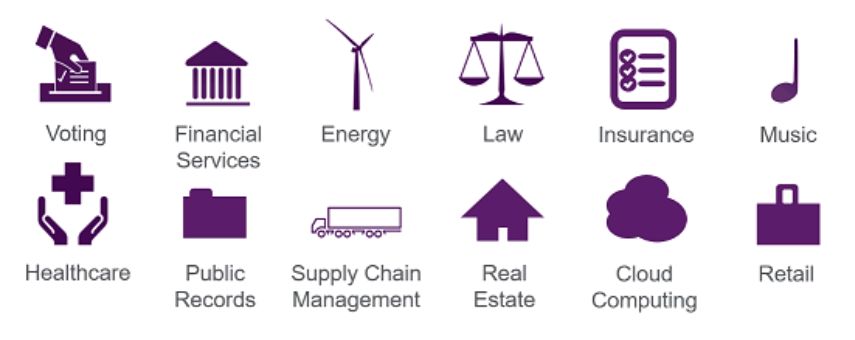Blockchain and other distributed ledger technologies (DLT) have attracted interest from a wide variety of stakeholders because of their potential as a transformative force across diverse industries. While some may dismiss this excitement as hype (see our recent comment on a chapter released by the Bank for International Settlements, which questions the use of cryptocurrency as money), we believe DLT is a profoundly powerful technology that should not be underestimated.
Distributed ledgers and blockchain
Today, simple transactions carried out in bulk require numerous parties to maintain their own transaction records, or to verify those of others. Accidental (or possibly deliberate) inconsistencies can arise, so parties rely on systems built around trusted third parties. DLT has emerged as an alternative mechanism for storing and transmitting data, by giving network participants access to a shared, synchronized record of transactions. DLT networks are constructed in a way that eliminates false entries, while reducing transaction costs paid out to third parties and reducing the need for a trusted central party.
A DLT network can be considered either public, private or a consortium. A public or "permissionless" DLT network, like blockchain (which is the technology that underpins Bitcoin), allows anyone to interact with the network. Any party can be a trusted participant, or "node" in the network, or choose to verify transactions ("mine"). Tokens are awarded to participants for their contributions to the network. The distributed ledger is updated in groups of transactions called blocks, which are chained sequentially via the use of cryptography to form the "blockchain." As such, there is no way to alter an entry. It can only be reversed, although those reversals only happen under rare circumstances.
In contrast to public DLT networks, private DLT networks can only be updated by trusted nodes, which are often chosen and regulated by the developer or central party. This central control means private DLT networks are similar to conventional systems in their reliance on specific institutions as the ultimate source of trust. JPMorgan Chase recently developed Quorom for applications requiring high speed and high throughput processing of private transactions within a permissioned group of participants, and intends to utilize the DLT as an interbank payments platform.
Consortium or federated DLT networks are a hybrid between private and public DLT networks. Rather than concentrating power within a single entity, a consortium or group of partners controls the consensus process. Each partner has its own node on the network and a pre-selected number from the group must sign every block for that block to be valid. The public may be able to read the network, or it may be restricted to the participants. The Blockchain Insurance Industry Initiative B3i has 15 members collaborating to increase efficiencies in the exchange of data between reinsurance and insurance companies.
Smart contracts
Smart contracts replace portions of a traditional written agreement using sophisticated, self-executable computer codes and data permission systems, both to record and to automate their execution. The possibilities for streamlining the cost, speed and accuracy of processes are exciting. Areas of particular interest are those instances where
- the performance of a contract takes place over a defined period;
- there is a need to collect data;
- the occurrence of specific events triggers payment or certain outcomes; and
- there is value in the parties having a shared record of data because it could have a direct impact on what happens next between the parties under the contract.
It is important to note, however, that smart contracts are not artificially intelligent or capable of machine learning. They are designed to bring about a particular outcome every time a specific set of conditions is fulfilled. As such, they are suitable for binary "if, then" conditions. Once a condition is met, the smart contract will take the next step necessary to execute the contract. For example, smart contracts would be ideal for parametric insurance, where payment is made upon the occurrence of a triggering event. In the event that your plane is delayed by a certain amount of time, or an earthquake reaches a particular magnitude, you will automatically receive payment instead of having to go through a lengthy claims process. One of the main challenges facing smart contracts is the difficulty of coding written legal prose drafted by lawyers in a standardized and seamless manner.
Furthermore, smart contracts cannot interact directly with the real world. Transactions that involve real-world actions, such as the delivery of professional legal services, require external data inputs to trigger their operation, with software agent programs known as "oracles" used to facilitate this process. Oracles interface with external data, so separate steps are necessary to ensure the data is accurate and that the oracle is not being manipulated. Thus, the "trustless" automated system of smart contracts will still often require users to trust third parties.
Making use of DLT, the man behind the curtain
Smart contracts and DLT show particular promise where the benefits of decentralized access exceed the higher operating cost of maintaining multiple copies of a ledger, such as the case of low-volume cross-border payments. As set out in Figure 1, the number of industries that DLT has the potential to disrupt is expansive, although this list is by no means comprehensive. We elaborate on a select few industries here. Note, however, that while these applications leverage DLT, they do not require the use or creation of a cryptocurrency, which is often cited as the most exciting use of DLT.
Figure 1. The many industries to be revolutionized by DLT.

Charities. The World Food Programme (WFP) is currently using a blockchain-based system for payment of delivery of food aid to Syrian refugees. The system runs on a permissioned protocol controlled by the WFP with funds ultimately paid in sovereign currency, which distinguishes it from cryptocurrency. This "cryptopayment" system has reduced transaction costs by 98 percent. The same technology could also be used for small-value, cross-border transfers, where multiple intermediaries charge a multitude of fees to complete each transaction.
Trade Finance. Smart contracts can be adopted by registered exchanges in permissioned protocols that use sovereign money as backing, simplifying administrative processes related to complex financial transactions, such as trade finance. Trade finance is cumbersome and costly, involving multiple document exchanges between the parties to a transaction. DLT could simplify the execution of the underlying contracts by automatically releasing payment to the exporter upon the addition of a valid bill of lading to the ledger.
Electricity. Pro-active consumers (prosumers) may be in a position to contribute to renewable energy production and could even trade with other prosumers through DLT as the market moves from a highly centralized structure with relatively few participants to a much more decentralized structure with an extremely large number of participants. Furthermore, the individual household is no longer a single homogeneous entity, but consists of an assortment of individual appliances that consume or, in some cases, store or generate power. DLT will allow these appliances to respond to remote signals, and make decisions about their consumption, storage and generation of power.
Law Technology. Smart contracts and DLT look to impact a number of aspects of the legal industry, and lawyers should facilitate, not impede, this transformation. While certain segments of the market may become significantly disrupted, entire new markets for legal services will emerge. For example, should a smart contract self-execute adverse to the parties' intent, demand for expertise surrounding what recourse might be available to remedy the problem will develop. A number of burgeoning applications have emerged that incorporate DLT to streamline the practise of law. Applications include platforms for drafting and maintaining a number of agreements including non-disclosure agreements and leases, as well as process-service tools that provide courts, law firms, governing bodies and parties to a case with access to verifiable, untampered service of process data. Dentons is proud to be the first Canadian law firm to join the Global Legal Blockchain Consortium (GLBC). A key function of the GLBC will be to adopt policies that promote a universal, DLT-based infrastructure for law. The GLBC will also govern how a permissioned DLT functions and establish policies relating to its operations.
About Dentons
Dentons is the world's first polycentric global law firm. A top 20 firm on the Acritas 2015 Global Elite Brand Index, the Firm is committed to challenging the status quo in delivering consistent and uncompromising quality and value in new and inventive ways. Driven to provide clients a competitive edge, and connected to the communities where its clients want to do business, Dentons knows that understanding local cultures is crucial to successfully completing a deal, resolving a dispute or solving a business challenge. Now the world's largest law firm, Dentons' global team builds agile, tailored solutions to meet the local, national and global needs of private and public clients of any size in more than 125 locations serving 50-plus countries. www.dentons.com
The content of this article is intended to provide a general guide to the subject matter. Specialist advice should be sought about your specific circumstances. Specific Questions relating to this article should be addressed directly to the author.

